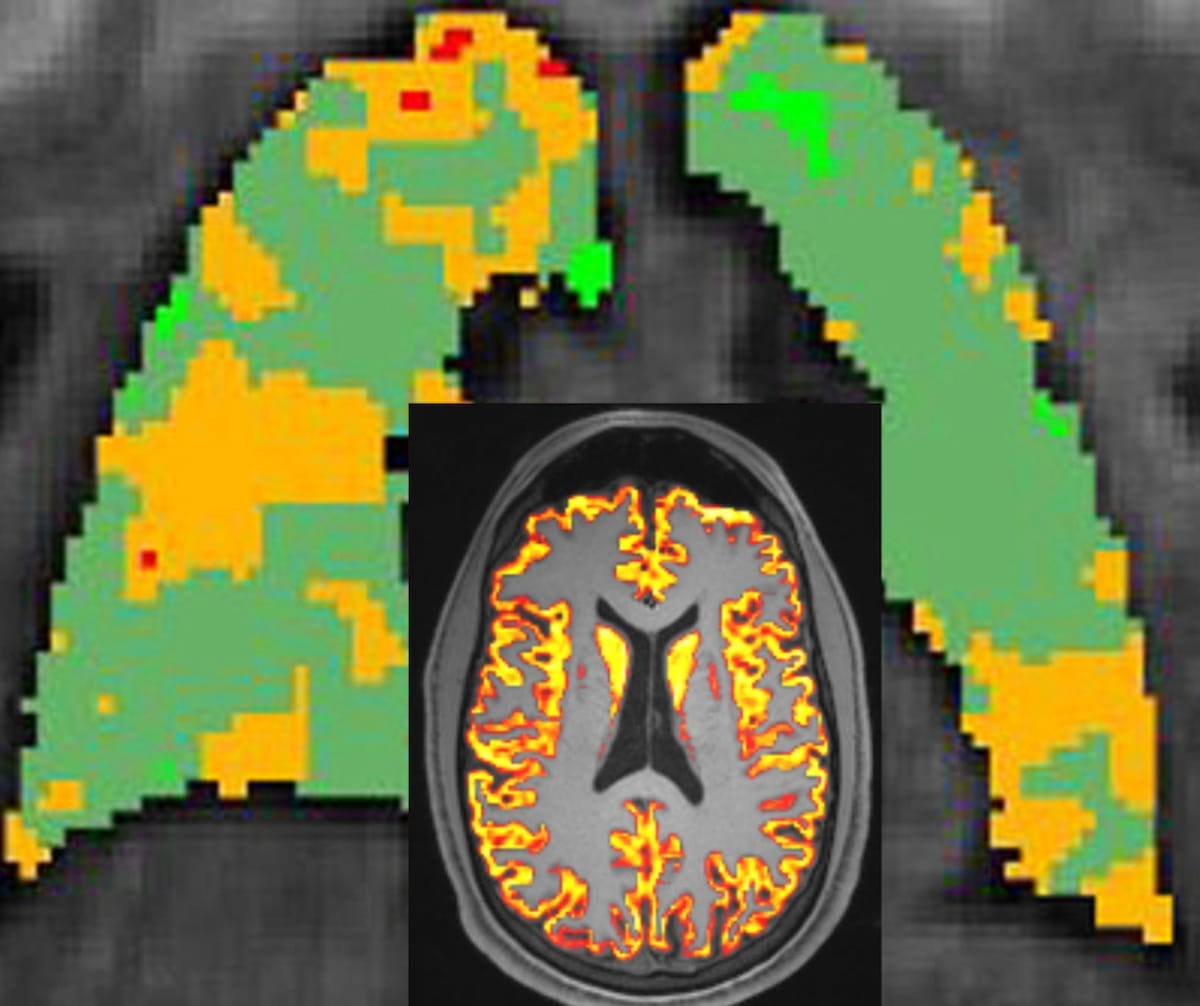MRI Long Covid Study Reveals Link Between Lower Pulmonary Gas Exchange and Cognitive Dysfunction
For patients with Long Covid, lower pulmonary gas exchange may be associated with lower gray and white matter volume, according to new MRI research to be presented at the Radiological Society of North America (RSNA) conference.
In what may be the first magnetic resonance imaging (MRI) study to examine pulmonary and cognitive effects of Long Covid, researchers said that preliminary findings demonstrate a possible link between cognitive dysfunction and lower pulmonary gas exchange.
For the study, which will be presented at the Radiological Society of North America (RSNA) conference, researchers reviewed data from hyperpolarized 129Xe pulmonary MRI as well as structural and functional brain MRI for 11 people who had persistent dyspnea and/or fatigue 31 months after acute COVID-19 infection.1
The study authors found that lower pulmonary gas exchange was associated with lower cerebral and parietal lobe white matter, and lower frontal lobe gray matter.
Here one can examples of low pulmonary gas exchange and a brain MRI (inset image) for a patient with Long Covid. New MRI research suggests that lower pulmonary gas exchange is associated with lower gray and white matter volume in patients with Long Covid. (Images courtesy of RSNA.)

The use of hyperpolarized 129Xe pulmonary MRI was particularly beneficial in this patient population, according to the researchers.
"129Xe MRI allows for advanced measurements of ventilation and gas exchange," noted lead study author Keegan Staab, B.S., a graduate research assistant affiliated with the Department of Radiology at the University of Iowa in Iowa City, Iowa. "The literature also indicates that 129Xe may be more sensitive to pulmonary injury compared to standard breathing tests, making it better suited to study long COVID in which patients typically have normal breathing tests."
(Editor’s note: For additional coverage of RSNA, click here.)
The researchers also uncovered a correlation between lower pulmonary gas exchange and higher cerebral blood flow but cautioned that larger studies are needed for further exploration of this association.
"This relationship could be a compensatory mechanism where lower lung function is compensated by higher cardiac output and higher brain perfusion," posited Stabb. "It's also a possibility that the disease mechanism that impairs pulmonary gas exchange also leads to higher brain perfusion through downstream vascular injury in both lung and brain."
Reference
1. Stabb K, McIntosh M, Percy J. Xenon-129 MRI pulmonary gas exchange in long Covid is associated with cognitive function and brain MRI. Poster to be presented at the Radiological Society of North America (RSNA) 2024 110th Scientific Assembly and Annual Meeting Dec. 1-5, 2024. Available at: https://www.rsna.org/annual-meeting .
SNMMI: Botox May Facilitate Relief from Dry Mouth Side Effect of PSMA-Targeted Radiopharmaceuticals
June 25th 2025For patients being treated with radiopharmaceutical agents for metastatic prostate cancer, the combination of botulinum toxin and an anti-nausea patch led to a 30 percent reduction in PSMA uptake in the salivary glands, according to preliminary research findings presented at the SNMMI conference.
The Reading Room: Artificial Intelligence: What RSNA 2020 Offered, and What 2021 Could Bring
December 5th 2020Nina Kottler, M.D., chief medical officer of AI at Radiology Partners, discusses, during RSNA 2020, what new developments the annual meeting provided about these technologies, sessions to access, and what to expect in the coming year.
Could an Emerging PET Tracer be a Game Changer for Detecting Hepatocellular Carcinoma?
June 23rd 2025In addition to over 90 percent sensitivity in detecting hepatocellular carcinoma (HCC), the glypican-3 (GPC3) targeted PET tracer 68Ga-aGPC3-scFv appeared to be advantageous in identifying HCC tumors smaller than one centimeter, according to pilot study findings presented at the SNMMI conference.
RSNA 2020: Addressing Healthcare Disparities and Access to Care
December 4th 2020Rich Heller, M.D., with Radiology Partners, and Lucy Spalluto, M.D., with Vanderbilt University School of Medicine, discuss the highlights of their RSNA 2020 session on health disparities, focusing on the underlying factors and challenges radiologists face to providing greater access to care.
SNMMI: What a New Meta-Analysis Reveals About Radiotracers for PET/CT Detection of PCa
June 22nd 2025While (68Ga)Ga-PSMA-11 offers a pooled sensitivity rate of 92 percent for prostate cancer, (18F)-based radiotracers may offer enhanced lesion detection as well as improved imaging flexibility, according to a meta-analysis presented at the Society for Nuclear Medicine and Molecular Imaging (SNMMI) conference.
SNMMI: Can Multimodal Monitoring Bolster Outcomes with Pluvicto in Treating mCRPC?
June 22nd 2025Multimodal treatment monitoring, including SPECT/CT exams 24 hours after treatment with Lu-177 PSMA-617, may have facilitated significantly shorter therapy durations and reduced side effects in patients with mCRPC, according to a two-year study presented at the Society for Nuclear Medicine and Molecular Imaging (SNMMI) conference.